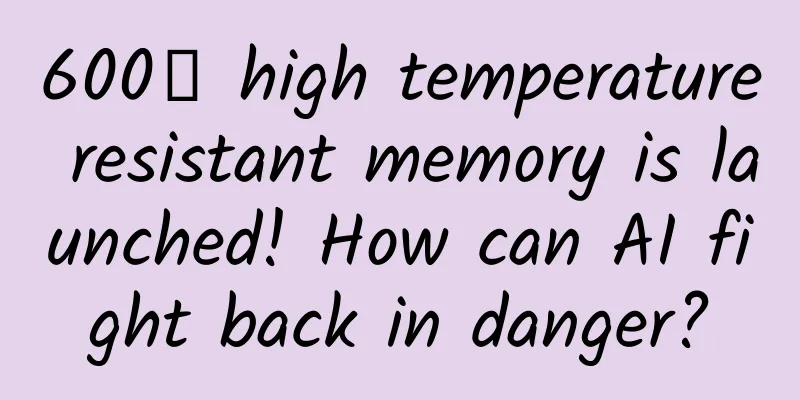What is flowing out of this tree? Can it also generate electricity for new energy vehicles?

|
In the 1970s, people discovered a magical tree on a small island in the Pacific Ocean. When its bark was cut, turquoise-colored juice would flow out. View image of Pycnandra acuminata, a tree that grows in New Caledonia, produces a bright blue-green sap (Credit: Atony van der Ent) The scientists found that the sap was up to 25% nickel, which they believe may be a strategy the plant uses to defend itself against insects . Dr Atony van der Ent from the University of Queensland, one of the people who specialises in studying the plant, said the tree is now only found in this remaining ancient rainforest. It is difficult for ordinary plants to survive in an environment where the content of heavy metals such as nickel exceeds the standard, let alone accumulate them in their body tissues. The plant is able to absorb metals that are toxic to most other plants into its trunk, leaves and even seeds. The tree's tissues contain a large amount of nickel compounds, giving the tree's sap a turquoise color (Image source: narido) Since then, other plants that can accumulate metals have been discovered, which are called " hyperaccumulators ." It is not easy for Dr van der Ent to study the "green juice plants" because they grow very slowly. "It can take decades for them to flower and bear fruit ," says Dr. van der Ent. And the plant is currently under various threats, with mining, logging and forest fires, and the space for these trees to survive is getting smaller and smaller . The green sign on the right is where the Pycnandra acuminata tree was found (Image source: Google map) Scientists don't yet understand how this "green sap tree" evolved the ability to accumulate nickel in such high concentrations to adapt to this harsh soil, but they believe it is not the result of human interference. "Different populations of hyperaccumulators have evolved many times, over millions of years, meaning they were originally grown in metal-rich soils ," said Dr van der Ent. Still, people see potential in these plants for remediating soils contaminated by metals or organic compounds. The process of phytoremediation (Image source: wiki) For most plants, metals are mainly concentrated in their roots. However, in hyperaccumulators, metal concentrations are abnormally high in leaves and much lower in roots. Scientists believe this is because they somehow transfer metal elements from the roots to the leaves, thereby protecting the roots from metal toxicity . The high metal content in the leaves of these plants can also keep herbivores, as well as harmful insects and pathogens away. Hyperaccumulators can use this method to concentrate harmful compounds from the environment and then break them down into smaller compounds without causing additional pollution. There are also many phytoremediation methods used to absorb heavy metal pollution in the soil, such as cadmium, lead and other elements. Some plants can remove metals, such as copper and zinc, from the soil by moving them into their roots and then into their leaves (Image source: wiki) However, when absorbing heavy metals, plants cannot further decompose them, so more caution is needed in the subsequent processing process to prevent these plants from being made into consumer products such as food or cosmetics. It is precisely this characteristic that gives hyperaccumulators another employment option: becoming miners . Simply put, plant mining is to wait for plants to mature, pick them, and then go through a process of drying, incineration and processing to recover the target metals. Some plants that can extract certain metals and their products (Image source: Reference [9]) The first phytomining experiment was conducted in Nevada by the now defunct U.S. Bureau of Mines using a hyperaccumulator of nickel in soils containing 0.35% nickel, far too low to be worthwhile using conventional mining techniques. The results show that plant mining can produce 100 kilograms of nickel per hectare, equivalent to a profit of about 10,000 yuan, and the returns are comparable to those of other cash crops. Dr. van der Ent's research also mentioned that since metal-rich soils make it difficult to increase the yield of food crops such as wheat or rice, plant mining can be a viable alternative and bring better economic benefits to the local area. “Phytomining will not replace food crops, but rather serve as a temporary solution until soil quality improves and food crops can be planted ,” van der Ent said. Some plant miners mining in Australia (Image source: Reference [9]) This is something to look forward to for the new energy transition. Green technologies such as electric vehicles are developing at an unprecedented speed, and cobalt and nickel needed for new energy batteries are also among the metals that hyperaccumulators can collect. Some scientists believe that **plant mining can enrich nickel to concentrations several orders of magnitude higher than in the soil, with far fewer impurities. **Plant mining is also less damaging to the environment than traditional mining, and it can also repair soil contaminated by metals, so this mining method has a promising future. Although there have been a large number of successful trials, scientists say that plant mining is still difficult to commercialize and requires large-scale trial operations to conduct risk assessments and a comprehensive analysis of the profitability of plant mining. From bio-extracts (left) to high-value nickel compounds or pure nickel (right) (Image source: Reference [10]) Van der Ent also said that only plants with nickel content above a certain percentage in leaf dry matter are worth growing commercially. “Not all plants are suitable for mining, and to make it a viable option, the overall yield and metal enrichment ratio need to be improved.” Another limitation of plant mining is that these hyperaccumulators are usually not high-yielding plants . Some plants are very climatically demanding, others are slow growing, and none of them are suitable for commercialization. Researchers are still looking for solutions to help plant miners officially take up their posts. Scientists have previously summarized hyperaccumulator plants that can specifically collect certain minerals. Among them, there is a species of mustard (Brassica juncea) that can collect gold. I recommend that everyone plant this. It's the kind used to make mustard (Image source: alliance for science) Reference Links [1]https://theintelligentminer.com/2021/12/09/how-to-grow-metals-using-plants/ [2]https://www.bbc.com/news/science-environment-45398434 [3]https://www.techwalker.com/2020/0906/3128742.shtml [4]https://en.wikipedia.org/wiki/Pycnandra_acuminata [5]https://en.wikipedia.org/wiki/Hyperaccumulator [6]https://en.wikipedia.org/wiki/Phytoremediation [7]https://en.wikipedia.org/wiki/Phytomining [8]https://singularityhub.com/2024/03/28/these-plants-could-mine-crucial-battery-materials-from-the-soil-with-their-roots/ [9] Antony van der Ent, Anita Parbhakar-Fox, Peter D. Erskine, Treasure from trash: Mining critical metals from waste and unconventional sources, Science of The Total Environment, Volume 758, 2021, https://doi.org/10.1016/j.scitotenv.2020.143673. [10]Environ. Sci. Technol. 2015, 49, 8, 4773-4780 Planning and production Source|Bring Science Home (ID: steamforkids) Author: Ziv Editor: Wang Mengru Proofread by Xu Lailinlin |
<<: How did the holiday end so quickly? What influenced your feelings?
>>: International first! Chinese scientists have made a major breakthrough
Recommend
Can moneywort cure kidney stones?
Kidney stones are a relatively common type of sto...
Eel head effects and functions
Eel head has a long history, and until now, the u...
Take the Sterculia lychnophora out of your cup quickly!
When you were in school, have you ever seen this ...
CNNIC: Data shows that nearly 80% of users recognize the security of online payment
Nearly 80% of users recognize the security of onl...
What are the effects and functions of cockscomb
Cockscomb is now used to help treat leucorrhea, o...
Who is suitable for taking a nap? Why do some people feel dizzy when they wake up, while others feel relaxed?
"I can't remember how long it has been s...
Quantitative analysis of remaining opportunities in 2C Internet
Winter is here. The term "capital winter&quo...
The efficacy and function of Babao Tea
Eight Treasure Tea has a long history, and up to ...
What are the effects and functions of banyan tree whiskers
I believe many of our friends will not be unfamil...
The efficacy and function of blue ingot fruit
Blue ingot fruit is a traditional Chinese medicin...
Earthquake Savior: The History of Seismographs
Written by Snow A seismograph is an instrument th...
The efficacy and function of dragonfly orchid
Dragonfly Orchid is a kind of traditional Chinese...
What happens if you eat too much Gastrodia elata?
As life gets better and better, many people are p...
Side effects and dosage of ligustrazine
If you are a patient who has been taking stroke a...
What to do if you get "hot" after eating oranges, eating melon seeds, and drinking beverages during the Chinese New Year? 4 ways to relieve it
During the holidays at home, I can’t stop eating ...







![The efficacy and function of Longchangcao [picture]](/upload/images/67ca3f9a64779.webp)

